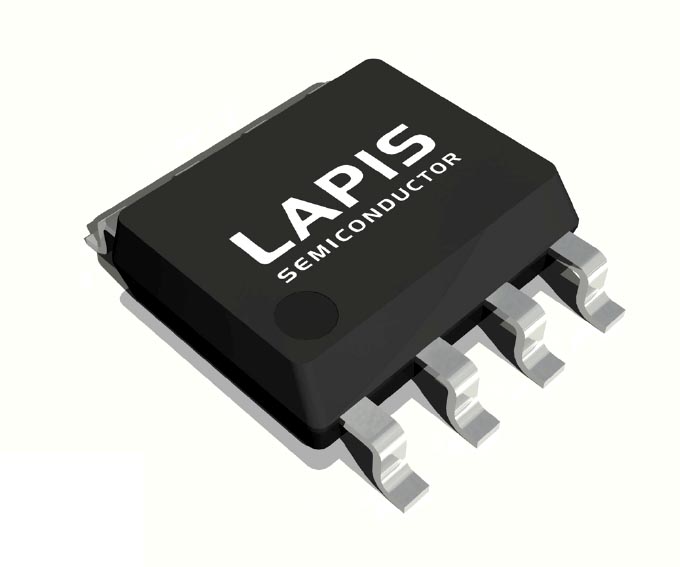High-speed 40 MHz operation and wide voltage range from 1.8 to 3.6 V improve reliability in IoT equipment
LAPIS Semiconductor has recently announced the development of 1 Mbit ferroelectric random access memory (FeRAM) designed for applications such as smart meters, measurement equipment, medical equipment, and financial terminals that require fast and frequent acquisition of log data and/or fast data backup in emergency situations.

Recent years have seen a growing demand by electronic devices to improve security in response to emergency blackouts, decreasing power consumption, device miniaturization/mobility, and increasing data scale. To meet these needs, LAPIS Semiconductor has developed FeRAM that provides greater capacity, achieves both a wider supply voltage range and high speed operation, and reduces power consumption during standby/sleep, making them ideal for battery-driven mobile equipment and terminals.
Compared to other non-volatile memories such as EEPROM and flash, FeRAM features faster data rewrite, higher rewrite durability, and lower power consumption. In 2011 LAPIS Semiconductor began combining ROHM's ferroelectric random access memory manufacturing expertise with its own memory development technology to develop FeRAM products in a variety of capacities and interfaces. This memory has since been adopted in multifunction printers, vehicle accessories, FA (Factory Automation) equipment, and other applications requiring fast and frequent data rewriting.
The MR45V100A provides high-speed 40 MHz operation over a wide supply voltage range from 1.8 to 3.6 V via SPI bus. And the large 1 Mbit capacity ensures stable, high-speed performance even during sudden voltage drops in unstable power environments, contributing to improved reliability when used for high-speed backup in installed equipment. Alternatively, we offer the MR44V100A featuring I2C bus I/F suitable for applications that do not require high-speed operation.
Additionally, with mobile applications in mind, the standby mode has been improved to curb the rise in power consumption that occurs when increasing memory capacity, and for the first time a sleep mode has been implemented to reduce power consumption even further. This results in an industry-leading low 10 µA (ave.) standby current and sleep current of just 0.1 µA (ave.), making them ideal for portable devices and handy terminals (i.e. approval terminals, data loggers) that place an importance on battery drive time.
